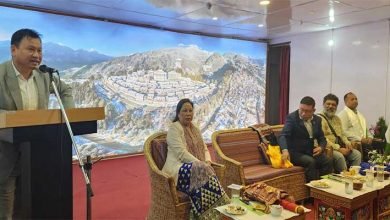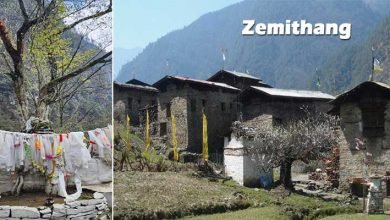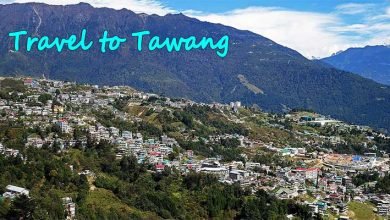Arunachal: The untold stories of Siang River
Siang River has been the source of folktales, folksongs, folklores, rhapsodies, and lullabies of the people living along the Siang valley since time immemorial

 (By Tayi Taggu, DC East Siang District ) –
(By Tayi Taggu, DC East Siang District ) –
Arunachal: The untold stories of Siang River- The Siang is the biggest river in India which flows all the way from Tibet’s Mansarovar Lake while meandering through the heartland of Arunachal Pradesh inhabited by Adis, and their numerous celebration of festivals make them one of the most colourful and vibrant tribe of this frontier state. Their ever liveliness shown in such festivities shows no sign of hardship faced by them in their private lives. For the Adis, Siang is a symbol of vibrant power, energy, and dynamism, and only the Almighty God ‘Donyi-Polo’ has the power to make it flow or stop . No other power can ever do it. To Adis, the Siang is not only a river, but it gives and shapes the cultural identity of the people as far as their memories can go back. And the Siang River has been the source of folktales, folksongs, folklores, rhapsodies, and lullabies of the people living along the Siang valley.
We called the river Siang Aane or Aane Siang, it means big or large Siang and here Aane means big and not Mother. And the SIANG itself is masculine gender and for instance, in counting genealogy SIANG is the name of the great-great-grandfather of Adis, their ancestor and it carries the patrilineal culture of the Adi society. And it is not only a mere coincidence that Tibetan, Adis and Assamese considered the Siang River as the largest, most turbulent, and most dynamic male river in Indian subcontinent.
Also Read- Parshuram Kund, The Hindu Pilgrimage Site
Most interestingly, the Adis call the river ‘SIANG’, etymologically speaking it consists of two words namely SI + ANG; SI means Water, ANG means Heart in Adi language, which means water of river’s heart or heart of all rivers. The Siang, flows across southern Tibet, then turns north-eastward then bend down south-eastward to cut through the Himalayas thereby forming a great gorge namely Yarlung Zangpo Grand Canyon east of Namcha Barwa, the highest peak of eastern Himalayan ranges of Pemako areas of Nyingchi Prefecture of Tibet.

Siang in its long journey covering different topography has got multiple names viz: the YarlungTsangpo or Zangbo, in Tibet, Dihang in periphery of Arunachal and Assam, the Brahmaputra in Assam India, Jumna, Padma, and Meghna in Bengal and Bangladesh. From its sources to the point of entry into Arunachal Pradesh it is called Tsangpo which means a purifier. And the Siang River which originates from Angsi Glacier on the northern side of the great Himalayas in Burang County of Ngari Prefecture of Tibet Autonomous Region (TAR) is considered a sacred river by the Adi people because its water is used in the ordeal to purify man’s sin and also to punish for guilt. People suffering from all kinds of skin diseases, weakness, and scurvy are advised to take bath in the Siang River to cure their diseases. The Siang is a River of healers, but sadly, in the last more than 7 years the Siang River is flowing with muddy torrents and its water turbidity is very high, and is not fit for bathing and swimming activities. To our deep agonizing pain survival of aquatic life in Siang is in great danger due to the reckless damping of the muck of Dams/road construction in the Tibetan region by China in the upper ridges of Siang River.

In an ordeal, accuse has to collect water from the Siang by a bamboo tube; boiled by a high-intensity bonfire, sometimes there is no bubbling of water in the tube to indicate the innocence of the accused person. However, if an opposing party is not satisfied then the accused is asked to dip his/her hand to prove his/her innocence in the bone-crushing boiling steam.
In ancient times, if any person committed any serious offense regularly and put other clan members live in serious danger or let them go into great economic losses often and if a person failed to reform then punishment is to drown him in the Siang River by clan brothers and no one questions them. The punishment seems to be very cruel, but this is how Adi controls social setup and crime in their society. The epic story of Nibo and Robo carries the same message of punishment in our system.
Also Read- Lohit Bridge- The Bridge of Hope
In our dream, if we swam across Siang River, we are likely to succeed in our mission or win a case on hand down, if we cannot then may fail or lose a case or work on hand. To saw Siang River in flood, there is likelihood of dispute among people and a war-like situation may crop up. On the other hand, if a person draws out a husking rice mate (Epu/Epo)) from the Siang then it could mean that person shall be very prosperous in life. To catch a big fish signify the prospect of getting huge cash or property. An eerie awesome whirling or roaring sounds of the Siang indicate a person may soon drown into it. The dead body of a person shall be never recovered or found, if the soul of Siang desires the person; on the other hand those drown dead body recovered is presume to be an accidental case. This is how the Siang River shapes the belief and faith system of the Adis.
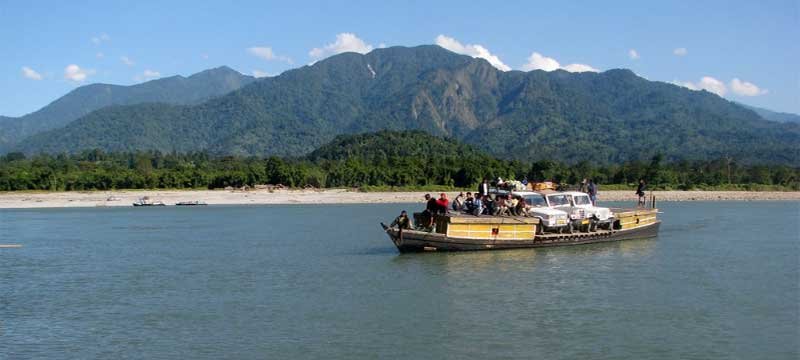
The Siang River also signifies beauty and purity because of which, the young boys and girls during their effort to win over the love of their life compare the beauty of a girl with the beauty of River Siang. They often joke, taunt, and mock girls with praises, “Hi Siang girl, are you as beautiful as Siang?” And on this, the girls would reply in chorus “Hi Siang boy, are you as strong as Siang, if not keep your mouth shut.” Siang since time immemorial carries our hope and dreams and it shall continue to inspire the generations to come. To a songwriter, it signifies the beauty of timeless love, a symbol of energy and power and its banks are places of people rendezvous.
I have witness it like all things in life, Siang is not always lovable, kind, and beautiful, but its fury and power of destruction is immeasurable. The Siang PUMU, the great flash flood of 11th June 2000 (Sunday) was a heart-numbing and nerve-racking, spine-chilling experience for one and all, rice fields after rice field, houses, and granaries were swallowed in a few seconds within winks of eyes. Bamboo Grove and Orange gardens were destroyed in a matter of not minutes but in seconds. Many people, including hundreds of domesticated animals, wild animals, snakes, etc drown in it on the day of a massive flash flood.
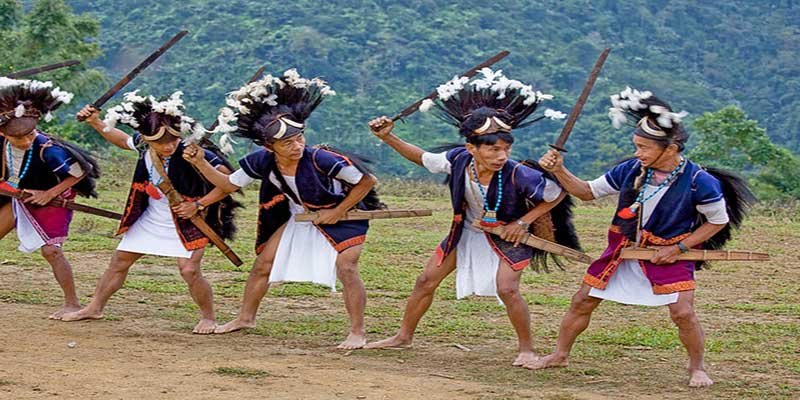
Inretrospect, Siang alone can’t be blamed for the vast devastation and destruction of properties, because greed blind people made them goes against nature’s law which is god’s first law for existence. Timeless valuable word of advice from elders and parents is ‘never encroach into river area’ is not adhered properly. It is well known fact rivers are known to research out their old course how long it might tookto flow again and in turn people are bound to suffer from the nemesis of their ill actions. People should understand cursing or bad-mouthing Siang would be a mistake, instead, they need to re-introspect their action and bow not to encroach upon the river domain. Now people haveunderstood Siang better as it has clearly spoken in a language understood by one and all and we are bound to respect it. The basic principle of life is if people want mankind to survive on this earth they should give space to others. ‘Humankind has not woven the web of life. We are but one thread within it. Whatever we do to the web, we do ourselves. All things are bound together. All things connect.’ The Red Indian words of wisdom.
The legend goes, that the Brahmaputra, the son of Lord Brahma, the god who created the world and everything; who is believed to be the creator of the universe. According to Hindu mythology, he is the first god of the Trinity (Brahma, Vishnu, and Mahesh). Brahma has four heads and it is believed that from these heads came the four Vedas and he isreferred as self-born.
It is said that once Lord Brahma was so mesmerized and spellbound by the beauty of Amodha, wife of great sage Shantanu. This was love at first sight and he was infatuated by her beauty and demeanour and asked for her hands. Amodha ignored his infatuation and rejected his approach of love. But out of his love and great excitation, he could not control his emotions and his semen came out in excitement. The moment Shantanu came to know about this, he immediately collected fallen siemens of Brahma and inseminated into the womb of Amodha. And this was how our SIANG (BRAHMAPUTRA) the great river was born.

It is well known to the world, Lake Manasarovaris a famous place of pilgrimage, attracting religious people from Nepal, India, Tibet, and other neighboring countries as well. Pilgrims come to take ceremonial baths in the water of the lake which is supposed to cleanse all of their sins. This is a high-altitude freshwater lake fed by the Kailash Glaciers of the Kailash Mountain where Lord Shiva took his meditation. The Lake is revered as a sacred place by the Hindus, the Jain, and the Bon as well as by the Buddhists. According to the Hindu belief, the lake was first created in the mind of the Lord Brahma after which it manifested on Earth. Hence it is called ‘Manasa Sarovaram’, which is a combination of the Sanskrit words for ‘mind’ and ‘lake’. And it is a personification of purity, and one who drinks water from it will go to the abode of Shiva after death, as it is believed to cleanseall sins one committed over his/her lifetimes.
The Lake Manasarovar is also called MapumYamco in Buddhist literature which means ‘Invincible Jake Lake’ in Tibetan, while ‘Mapum’ meaning undefeatable. Reportedly, Buddha stayed and meditated near the lake on several occasions. And the Manasarovar is called ‘The Jewel of Tibet’ because of Tibetan traditions of meditation, narrations, and descriptions were made popular here. Not surprisingly, it is the oldest and most sacred lake for the Buddhist, the Hindu, and Bon religions.
Rivers are the lifeline of our civilization. The beginning of all civilizations started on the banks of rivers viz:- Indus Valley Civilization on Indus River, Huang Ho Civilization on Huang Ho or Yellow River and Egyptian Civilization on Nile River so on and so forth. True, rivers are/were always the backbone of human civilization.Our cultures, arts, music, and lifestyle have been deeply influenced, shaped, and guided by the rivers.
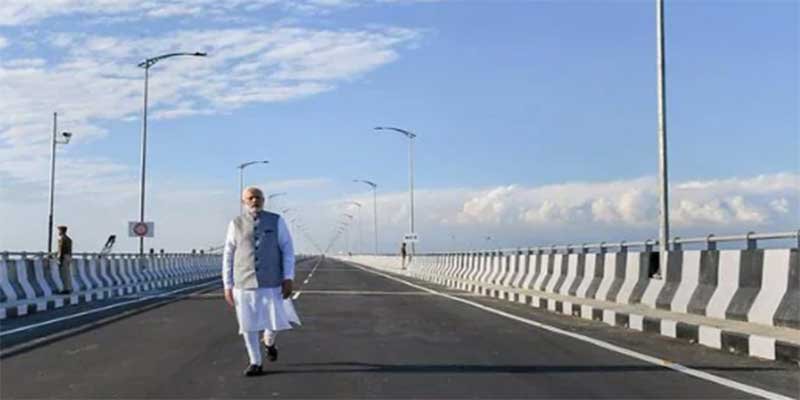
We are because of rivers and rivers are not because of us. To honour the Siang River, the Ganga Manohar program was conducted by Sanskar Bharati Arunachal on 25th December 2018 at Pasighat, on the auspicious day on which Mr Narendra Modi, Prime Minister of India inaugurated the Bogibeel bridge, the bridge which not only connects both the states but the hearts and minds of people of Arunachal Pradesh and Assam which they had eagerly waited for the last 70 years to happen. The Bogibeel was a dream comes true over the river Brahmaputra which is really a game changer for the people of upper Assam and Arunachal Pradesh.
The Siang River spread its wings to carry messages of music, drama, dances, folk dances, and traditional art forms to preserve the cultural heritages of Adi tribe, Arunachal Pradesh and India and to showcase the cultural beauty, and brotherhood message of Arunachal to the world at large.
Siang is our pride which can be accepted as‘treasure’ as it represent our Tangible and Intangible Cultural Heritages. If we don’t care, about our treasure in times to come, there is the likelihood of scarcity of potable water in the world due to the mindless destruction of the environment as result of people’s greed. Some experts have predicted that the third world war if ever happens, the river water would be the main cause. For instance, China has already built five dams on the upper course of the Siang River, and if the rumour is to be believed the Chinese Government is planning to divert water from Yarlung Zangbo to the arid region of Xinjiang province where there is a huge scarcity of water. If the turbidity of the Siang River in the last 7 years is any indication of the shape of things to come, people might face unprecedented environmental disasters on a scale that have never been witnessed before. The onus lies on government of Arunachal Pradesh and India to take rightful steps to approach this issue with the Republic of China at the earliest.
Watch Video: Bhimashankar Jyotirlinga, stream surrounding the Shiva Linga in Guwahati
When view with different perspective over democratizing of decision-making sometimes turns into meaningless gossip. The best example is our people have been debating the merits and demerits of hydropower dams, for almost half a century without any outcome endlessly. Our people seem to love debating whether that debate bears fruit or not. And the Chinese people must be very happy and satisfied, because while our people engross in meaningless debating, they built multiple mega-dams across the same river without whispering from anti-dam groups. And now is time, if we don’t allow building a dam over the Siang River, our claim of right to use the water shall hold not much weight in any International water dispute Tribunal. The dam protestors of India have no words to say about China’s Mega Dams construction and sadly, now the Chinese are said to be going ahead by cutting the tunnel hole equivalent to running two trains simultaneously to divert the water of the Yarlung Zangbo to Xinjiang province, to loss of our pride.
Rivers are roots of human civilization, and let Siang River continue to mellifluous with lullabies and rhapsodies of Adis and be a source of inspiration for the generations to come. Siang is the river of our hope and aspiration, our culture and traditions flows with it.
( Writer of this article on Siang river, Shri Tayi Taggu is currently the Dy. Commissioner of East Siang District, Pasighat, Arunachal Pradesh)




